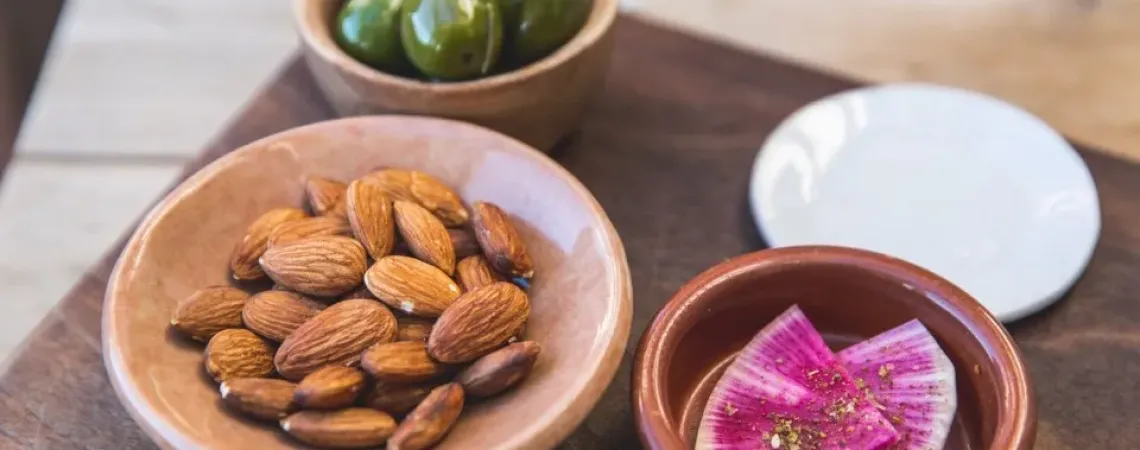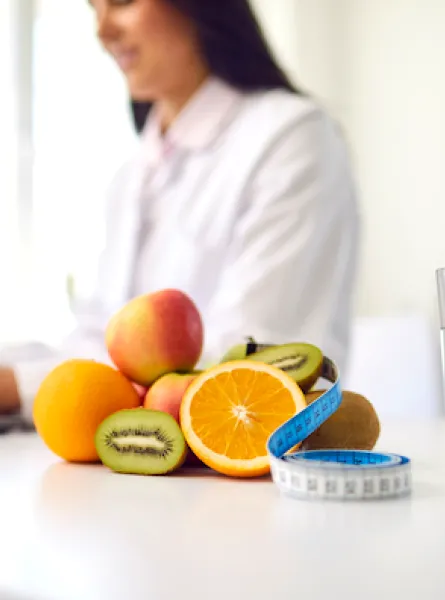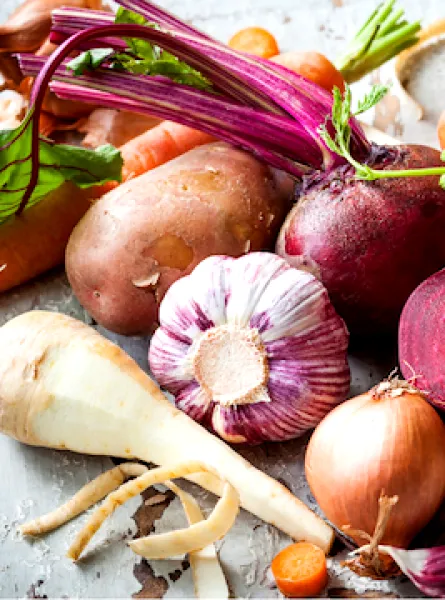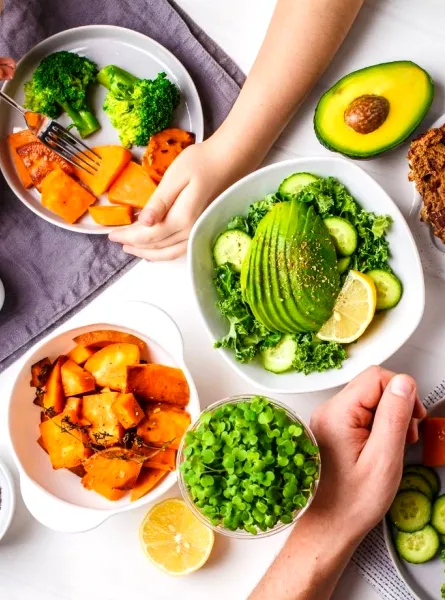
Inflammation is a concept that is being studied more and more. By definition, inflammation is a defense reaction of the body and contributes to chronic pain. While there is no "pain-free" diet to date to control these types of problems, adopting certain anti-inflammatory eating habits can help manage symptoms.
Food eliminations
Although many trends suggest removing certain food groups as part of an anti-inflammatory diet such as dairy and gluten, there is no significant scientific evidence to support following such restrictions outright. Some people may respond well to such elimination diets based on their personal experiences. However, before turning to these approaches, I suggest always thinking in terms of dietary ADDITIONS, not RESTRICTIONS.
Additions to consider to help control inflammation
1. Fruits and vegetables
Add colors to your plate! Thanks to their high content in antioxidants, fiber and many vitamins and minerals, fruits and vegetables are true superheroes for reducing inflammation. Remember to fill half your plate with fruits and vegetables at every meal. Whether it's in the form of a pesto and tuna orzo salad, or a tray of salmon and veggies, all forms of fruits and vegetables are beneficial! If you have trouble integrating them, you can even put them on the menu without realizing it, thanks to our team's tips.
2. Olives
Olives and their oil have proven anti-inflammatory, antimicrobial and antioxidant properties. In addition to their interesting monounsaturated fat content ("good fats"), olives contain polyphenols and secoiridoids, small molecules found in plants that have the power to reduce inflammation. Olive oil holds up well to pan-frying, so use it instead of butter for cooking. Also, it can be incorporated into our raspberry vinaigrette, which combines olive oil with fruit for an anti-inflammatory combo.
3. Plant-based proteins
Including protein sources such as legumes and soy may improve some inflammatory markers and reduce pain. If you're not familiar with these proteins, it's possible to start by replacing half the meat in your favorite recipes with lentils, TVP (textured vegetable protein) or shredded tofu like in these taco or meatloaf recipes.
4. Spices
Ginger (gingerol) and turmeric (curcumin) extracts have significant anti-inflammatory properties. This Moroccan millet recipe is perfect for combining these spices. To optimize the absorption of curcumin, combine it with olive oil and black pepper.
In conclusion, there are many dietary additions to consider before embarking on an anti-inflammatory exclusion diet. The four options presented in this article represent only the main ones. A dietitian can assist you in this process.
REFERENCES
Arjmandi, B.H., Khalil, D.A., Lucas, E.A., et al. (2004). Soya protein may alleviate osteoarthritis symptoms. Phytomedicine;11(7-8), 567–575.
Beauchamp, G.K., Keast, R.S.J., Morel, D., et al. (2005). Ibuprofen-like activity in extra-virgin olive oil. Nature;437(7055):45-46.
Daily, J.W., Yang, M. et Park, S. (2016). Efficacy of Turmeric Extracts and Curcumin for Alleviating the Symptoms of Joint Arthritis: A Systematic Review and Meta-Analysis of Randomized Clinical Trials. J Med Food;19(8):717-729.
Du, C., Smith, A., Avalos, M. et al. (2019). .Blueberries Improve Pain, Gait Performance, and Inflammation in Individuals with Symptomatic Knee Osteoarthritis. Nutrients;11(2):290.
Heidari-Beni, M., Moravejolahkami, A.R., Gorgian, P., Askari, G., Tarrahi, M.J., et Bahreini-Esfahani, N. (2020). Herbal formulation "turmeric extract, black pepper, and ginger" versus Naproxen for chronic knee osteoarthritis: A randomized, double-blind, controlled clinical trial. Phytother Res;34(8):2067-2073.
Hosseinpour-Niazi, S., Mirmiran, P., Fallah-Ghohroudi, A. et Azizi, Fl. (2015). Non-soya legume-based therapeutic lifestyle change diet reduces inflammatory status in diabetic patients: a randomised cross-over clinical trial. Br J Nutr;114(2), 213–219.
Hull, M. et Brown, W. (2020). Joint Health Supplement Guide. Examine. Accessible avec Abonnement seulement: https://examine.com/plus/#sales-supplement-guides
Les diététistes du Canada. Rheumatoid Arthritis- Knowledge Pathway. In: Practice-based Evidence in Nutrition [PEN]. 30 janvier 2019 [cité le 19 septembre 2022]. Disponible au: https://www.pennutrition.com/KnowledgePathway.aspx?kpid=978. Accessible avec abonnement seulement
Ortolà, R., Garcia-Esquinas, E., Sotos-Prieto, M. et al. (2022). Mediterranean Diet and Changes in Frequency, Severity, and Localization of Pain in Older Adults: The Seniors-ENRICA Cohorts.J Gerontol A Biol Sci Med Sci;77(1):122-130.
Rondanelli, M., Faliva, M.A., Miccono, A., et al. (2018). Food pyramid for subjects with chronic pain: foods and dietary constituents as anti-inflammatory and antioxidant agents.Nutr Res Rev;31(1):131-151.
Schell, J., Scofield, R.H.., Barret, J.R. et al. (2017). Strawberries Improve Pain and Inflammation in Obese Adults with Radiographic Evidence of Knee Osteoarthritis. Nutrients;9(9):949.
Semwal, R.B., Semwal, D.K., Combrinck, S. et Viljoen, A.M. (2015). Gingerols and shogaols: Important nutraceutical principles from ginger. Phytochemistry;117:554-568.
Terry, R., Posadzki, P., Watson, L.K. et Ernst, E. (2011). The use of ginger (Zingiber officinale) for the treatment of pain: a systematic review of clinical trials. Pain Med;12(12):1808-1818.






